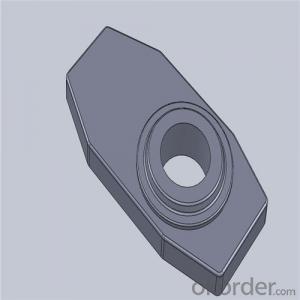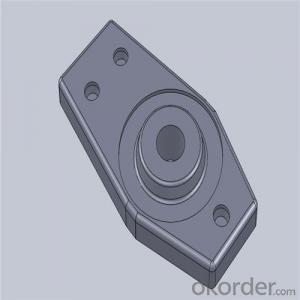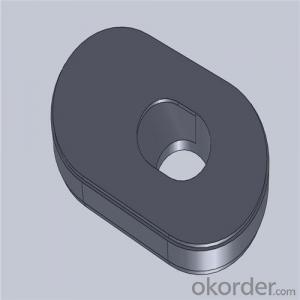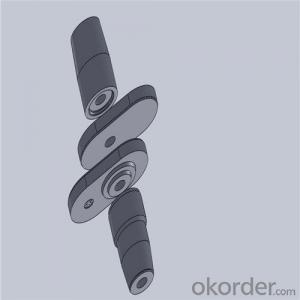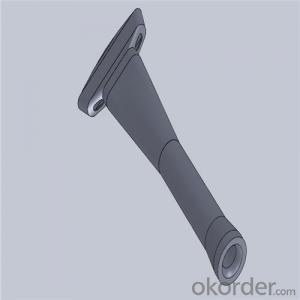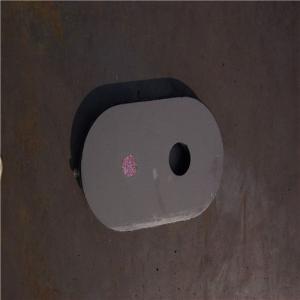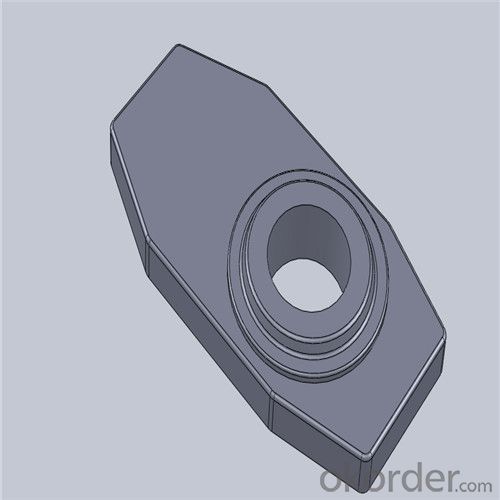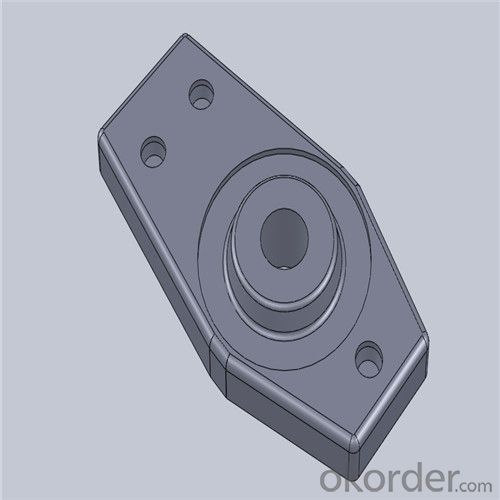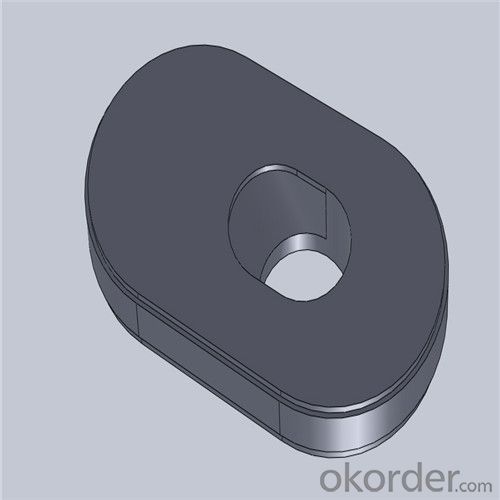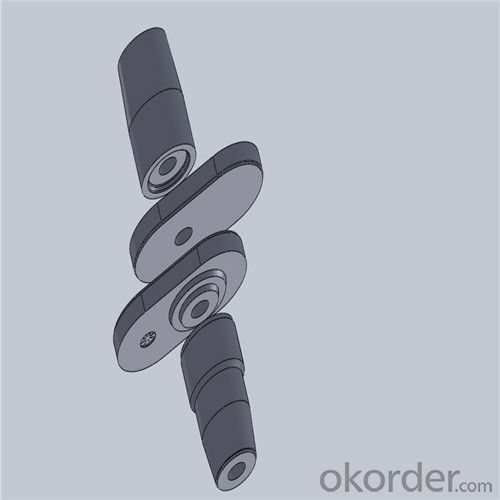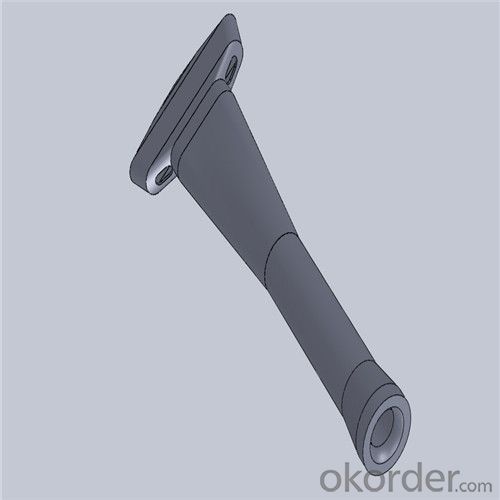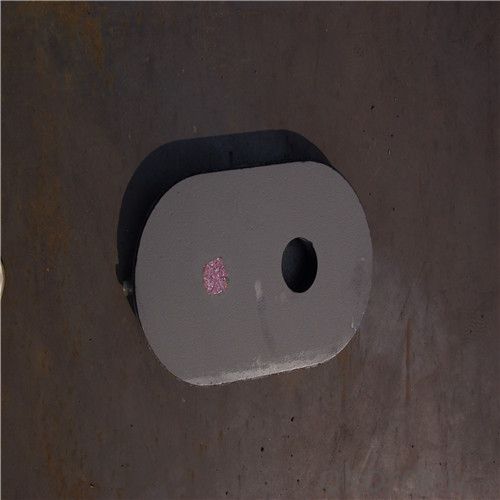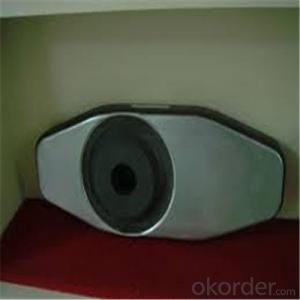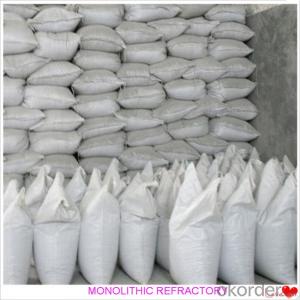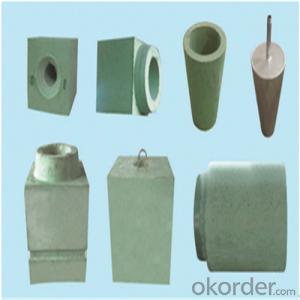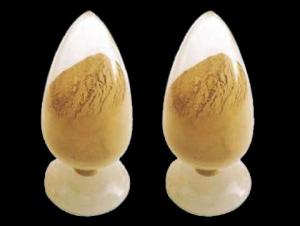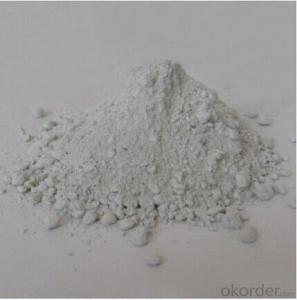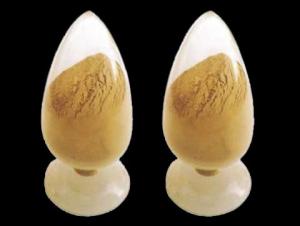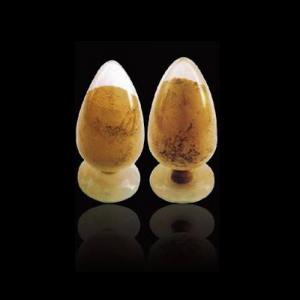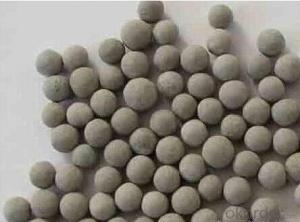Monolithic Refractories High Performance & Temperature Ladle Sliding Gate for Steel
- Loading Port:
- Shanghai
- Payment Terms:
- TT OR LC
- Min Order Qty:
- 100 pc
- Supply Capability:
- 1000 pc/month
OKorder Service Pledge
OKorder Financial Service
You Might Also Like
Quick Details for High Performance Refractory Ladle Slide Gate
| Place of Origin: | China (Mainland) | Shape: | Plate | Material: | Alumina Block |
| SiO2 Content (%): | N/A | Al2O3 Content (%): | 80-90% | MgO Content (%): | N/A |
| CaO Content (%): | N/A | Refractoriness (Degree): | 1770°< Refractoriness< 2000° | CrO Content (%): | N/A |
| SiC Content (%): | N/A | Model Number: | CS80 | Brand Name: | |
| Product name: | High performance refractory ladle slide gate | Model No.: | cs80 | Brand name: | CMAX |
| Quality: | Al-C or Al-Zr-C | Service life: | 4-6 heats | Apparent porosity: | 7% Max |
| Bulk density:: | 3.1 MIN | C.C.S: | 120MPA | MOQ: | 100 pcs for trial |
| Delivery time: | 60 working days upon receipt of deposit |
Packaging & Delivery
| Packaging Details: | Inner carton packing, outer wooden case suitable for long term sea shipping |
| Delivery Detail: | three months working days upon receipt of deposit |
Specifications
Surface flatness less than 0.05mm
High mechanical strength
Erosion resistance
Oxidation resistance
Thermal shock stability
Using the raw materials of tabular alumina, zirconia-corundum, carbon and other high-grade additives, after sintering to obtain characteristics of oxidation resistance, scour strength, erosion resistance, thermal shock resistance, shape stable and long service life, made our products the preferred materials for the large and medium-sized steel ladle, refining ladle, series of alloy steel ladle, and tundish. Our high performance sintering sliding gates include alumina carbon , Al2O3-ZrO2-C, etc, can meet the needs of different steel grade.
General Chemical Analysis for refractory ladle slide gate :
slide gate plate widely including Alumina carbon and Alumina Zirconia Carbon slide gate plate, MgO and MgO-spinel slide gate plate,nonoxides bonding slide gate plateand unburned slide gate plate.
Alumina -Zirconia-Carbon material
| Al-Zr-C Material | |||||
| Al2O3 | C | ZrO2 | Apparent porosity | Bulk density | C.C.S |
| (% minm) | (% minm) | (% minm) | (% max) | (gm./cc minm) | (MPa minm) |
| 85 | 3 | 5 | 7 | 3.1 | 120 |
| 85 | 3 | 4 | 7 | 3.1 | 120 |
Composite type: Al-Zr-C for working line, outer Al-C material
| Al-Zr-C & Al-C Material | ||||||
| Al2O3 | C | ZrO2 | Apparent porosity | Bulk density | C.C.S | |
| (% minm) | (% minm) | (% minm) | (% max) | (gm./cc minm) | (MPa minm) | |
| Inner side (Working face) | 85 | 3 | 4 | 7 | 3.1 | 120 |
| Outside | 90 | 3 | 0 | 9 | 3 | |
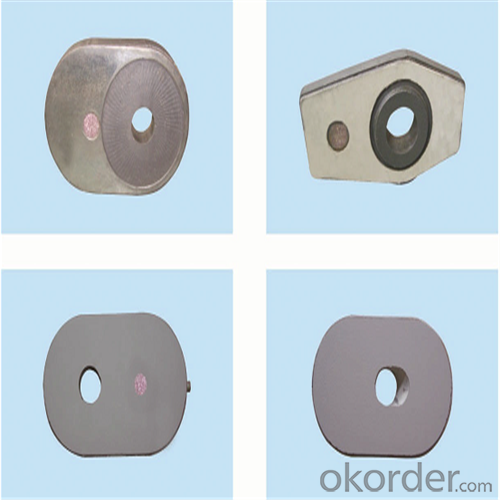
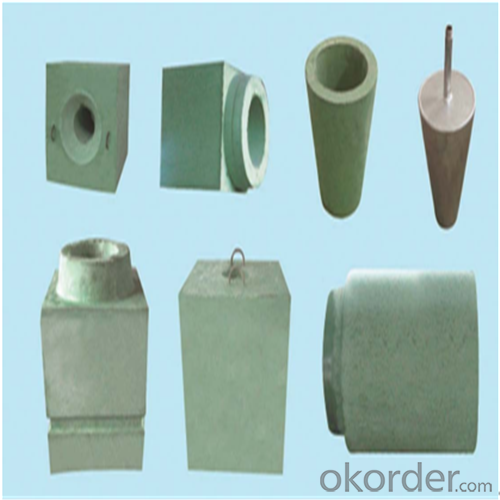
Other Products
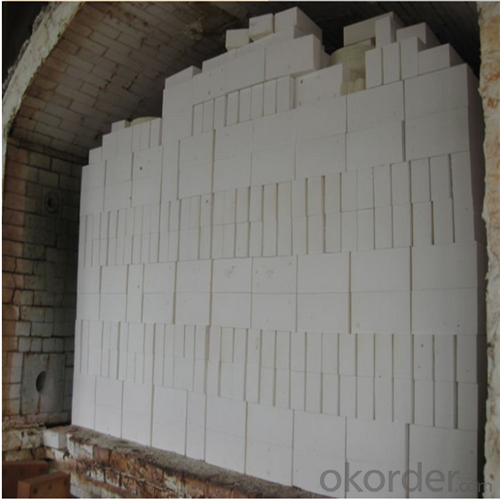
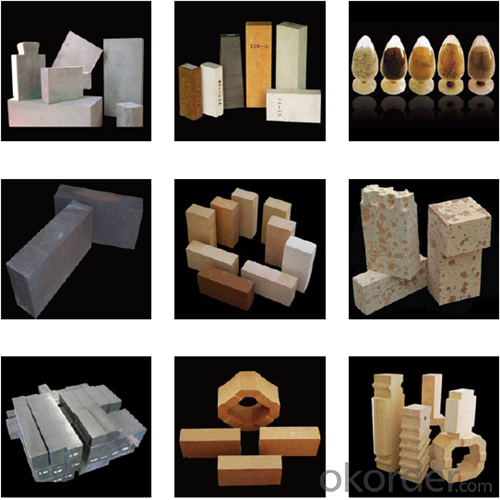
About us
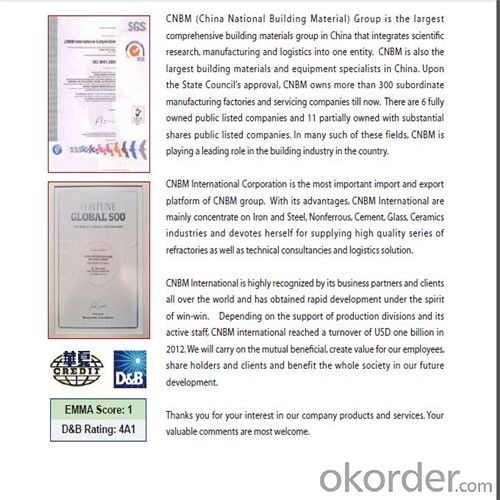
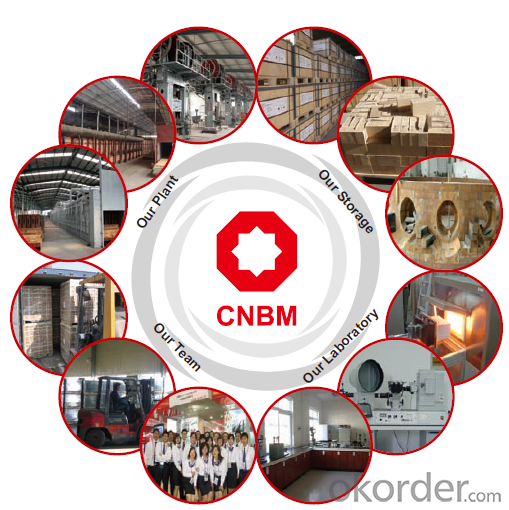
Sample is on your request.
Welcome to visit our factory~
- Q: How do monolithic refractories contribute to the overall efficiency of ladle transfer processes?
- The efficiency of ladle transfer processes is greatly improved by the use of monolithic refractories. These refractories are made from a single, uniform material, making them easy to install and maintain. This feature reduces downtime during ladle transfers, ultimately increasing productivity. One of the ways in which monolithic refractories enhance efficiency is through their high thermal conductivity. Ladle transfers involve the movement of molten metal, which generates a significant amount of heat. Monolithic refractories have exceptional heat resistance, allowing them to withstand the extreme temperatures of the molten metal. This property prevents refractory failure and extends the lifespan of the ladle, resulting in more efficient and uninterrupted ladle transfer operations. Furthermore, monolithic refractories provide superior corrosion resistance. The corrosive nature of molten metal can cause considerable damage to ladles over time. However, monolithic refractories are specifically designed to withstand chemical attacks from molten metal, preventing the degradation of the ladle's integrity. Consequently, ladles lined with monolithic refractories have a longer lifespan and require less frequent replacement, leading to cost savings and improved efficiency. Another factor contributing to the efficiency of ladle transfer processes is the ability of monolithic refractories to conform to complex shapes and designs. Ladles come in various sizes and shapes, and monolithic refractories can be customized to perfectly fit the dimensions of the ladle. This precise fit minimizes heat loss and maximizes energy efficiency during ladle transfers. Additionally, monolithic refractories offer excellent mechanical strength and resistance to thermal shock. Ladle transfer processes involve the handling and movement of ladles, subjecting refractories to mechanical stresses. The exceptional mechanical properties of monolithic refractories ensure their durability and prevent cracking or spalling, reducing the risk of refractory failure and enhancing the efficiency of ladle transfer operations. In conclusion, the efficiency of ladle transfer processes is improved by the use of monolithic refractories due to their high thermal conductivity, corrosion resistance, precise lining fit, and excellent mechanical properties. These refractories enhance the durability of ladles, reduce downtime, and improve energy efficiency, resulting in cost savings and increased productivity in the steelmaking industry.
- Q: What are the recent developments in monolithic refractories for the iron and steel industry?
- In recent years, there have been several significant developments in monolithic refractories for the iron and steel industry. Monolithic refractories play a crucial role in the production of iron and steel, as they provide high-temperature resistance and insulation to the lining of furnaces and other equipment used in the industry. One of the key advancements in monolithic refractories is the development of advanced alumina-based castables. These castables offer superior thermal shock resistance, high strength, and excellent corrosion resistance, making them ideal for use in the iron and steel industry. They can withstand extreme temperatures and mechanical stresses, ensuring longer service life and reduced downtime for maintenance. Another notable development is the introduction of low-cement and ultra-low cement castables. These castables have a reduced cement content compared to traditional castables, resulting in improved refractory properties. They offer higher hot strength, reduced porosity, and enhanced resistance to slag and metal corrosion. This allows for increased productivity and efficiency in iron and steel manufacturing processes. Furthermore, there have been advancements in the use of insulating refractories in the iron and steel industry. Insulating castables and bricks are now being used to line ladles, tundishes, and other equipment, providing better insulation and energy efficiency. These materials help to reduce heat loss and improve thermal efficiency, resulting in cost savings and reduced environmental impact. Additionally, the development of monolithic refractories with improved installation techniques has been a significant development. Traditional brick lining methods require skilled labor and a longer installation time. However, with the introduction of gunning and shotcreting techniques, the installation process has become faster and more efficient. These techniques involve spraying refractory materials onto the lining surface, ensuring better adherence and reducing the risk of lining failure. Overall, the recent developments in monolithic refractories for the iron and steel industry have focused on improving thermal shock resistance, corrosion resistance, insulation properties, and installation techniques. These advancements have resulted in increased efficiency, reduced downtime, and improved productivity in the iron and steel manufacturing processes.
- Q: Can monolithic refractories be used in electric arc furnaces and induction furnaces?
- Yes, monolithic refractories can be used in both electric arc furnaces and induction furnaces. Monolithic refractories are versatile and can be shaped and installed easily, making them suitable for various types of furnaces, including electric arc furnaces and induction furnaces. These refractories are composed of a single material, such as castables, gunning mixes, ramming mixes, and plastic refractories, which can withstand high temperatures and thermal shock. They are commonly used to line the walls, roofs, and bottoms of furnaces to provide insulation and protection against the extreme heat generated during the melting and refining processes. Monolithic refractories offer excellent resistance to chemical attack, erosion, and mechanical stress, making them ideal for use in electric arc furnaces and induction furnaces, where intense heat and harsh operating conditions are encountered.
- Q: How do monolithic refractories respond to changes in thermal conditions?
- Monolithic refractories have the ability to withstand and adapt to changes in thermal conditions. They have a high thermal shock resistance, meaning they can handle rapid changes in temperature without cracking or breaking. Additionally, they exhibit good thermal conductivity, allowing them to efficiently conduct and distribute heat. Overall, monolithic refractories demonstrate a stable and reliable response to changes in thermal conditions.
- Q: What are the key considerations when selecting monolithic refractories for tundish applications?
- When selecting monolithic refractories for tundish applications, the key considerations include thermal stability, erosion and corrosion resistance, thermal shock resistance, ease of installation and maintenance, and cost-effectiveness.
- Q: How do monolithic refractories improve the performance and efficiency of iron and steel production?
- Monolithic refractories play a crucial role in improving the performance and efficiency of iron and steel production. These specialized materials are designed to withstand extreme temperatures, chemical reactions, and mechanical stresses, making them ideal for use in high-temperature industrial processes. One of the key ways in which monolithic refractories enhance performance is by providing a protective lining in furnaces, kilns, and other equipment used in iron and steel production. Due to their superior heat resistance, they protect the underlying structure from the intense heat and prevent any detrimental effects on the equipment. This results in reduced downtime, longer service life, and ultimately, increased overall efficiency. Monolithic refractories also ensure better thermal efficiency in the production process. By minimizing heat losses, these materials help to maintain a stable and uniform temperature distribution, thereby improving the energy efficiency of the system. This is particularly important in iron and steel production, where precise temperature control is crucial for achieving the desired metallurgical properties of the final product. Furthermore, monolithic refractories offer excellent resistance to chemical corrosion, erosion, and slag attacks. They act as a barrier between the molten metal and the refractory lining, preventing undesirable reactions and material degradation. This helps to maintain the integrity of the furnace lining, reducing the need for frequent repairs or replacements. Consequently, it leads to increased productivity and cost savings in the long run. Another advantage of monolithic refractories is their ability to be easily shaped, repaired, or replaced. Unlike traditional brick refractories, which require extensive labor and time-consuming installation, monolithic refractories can be applied in a more flexible and efficient manner. Their flexible nature allows for easy repair of damaged areas, minimizing downtime and ensuring continuous production. In summary, the use of monolithic refractories significantly enhances the performance and efficiency of iron and steel production. These materials provide a protective lining, improve thermal efficiency, resist chemical corrosion, and offer easy installation and repair options. By optimizing the production process, monolithic refractories contribute to higher productivity, reduced downtime, and increased cost-effectiveness in the iron and steel industry.
- Q: How do monolithic refractories contribute to the reduction of downtime in iron and steel plants?
- Monolithic refractories play a crucial role in reducing downtime in iron and steel plants due to their unique properties and applications. These refractories are composed of a single, uniform material, making them highly versatile and easier to install compared to traditional brick refractories. Firstly, monolithic refractories offer excellent thermal insulation, which helps to prevent heat loss and maintain high temperatures in various areas of the plant. This insulation capability reduces the need for frequent repairs and replacements, as it minimizes thermal stress and prolongs the lifespan of equipment and furnaces. This, in turn, results in less downtime required for maintenance and repair work. Secondly, monolithic refractories exhibit superior resistance to thermal shock. The extreme temperatures experienced in iron and steel plants can cause rapid and significant temperature changes, leading to the cracking and failure of refractory linings. However, monolithic refractories have better thermal shock resistance, enabling them to withstand sudden temperature fluctuations without sustaining damage. This property enhances their durability and contributes to the reduction of downtime. Moreover, monolithic refractories offer enhanced mechanical strength and chemical resistance, making them suitable for the harsh operating conditions in iron and steel plants. These refractories can withstand the erosive effects of molten metal, slag, and other corrosive materials, ensuring the longevity of equipment and reducing the frequency of maintenance interventions. Additionally, the installation process of monolithic refractories is faster and more efficient compared to brick refractories. They can be easily applied using various techniques, such as shotcreting or gunning, allowing for quick repairs or renovations during planned shutdowns or even emergency situations. The reduced installation time results in shorter downtime periods, enabling the plant to resume operations promptly. In conclusion, monolithic refractories significantly contribute to the reduction of downtime in iron and steel plants through their excellent thermal insulation, resistance to thermal shock, mechanical strength, and chemical resistance. Their ease of installation and quick repair capabilities further enhance their role in minimizing downtime and ensuring uninterrupted production in these critical industries.
- Q: What are the key properties of patching mixes used for monolithic refractory repairs?
- The key properties required for patching mixes used in the repair of monolithic refractories include: 1. High temperature resistance: The patching mixes should have the ability to withstand high temperatures without compromising their structural integrity. They must be capable of enduring temperatures ranging from 2000 to 3000 degrees Fahrenheit. 2. Chemical resistance: These patching mixes should be resistant to chemical reactions that occur in the presence of molten metals, slag, or other corrosive substances. They should not deteriorate or react with these materials, ensuring the longevity of the repaired refractory. 3. Thermal shock resistance: The patching mixes must have the ability to withstand sudden and extreme temperature changes without cracking or spalling. Refractory linings are often subjected to intense thermal cycling, and the patching material should be able to endure these conditions without failure. 4. Adhesion: The patching mixes should possess excellent adhesion properties to create a strong bond with the existing refractory material. This is crucial to prevent any separation or detachment of the patching material, which could result in further damage or failure. 5. Workability: The patching mixes should have good workability, allowing for easy and efficient application. They should be easily moldable and capable of effectively filling cracks, gaps, or damaged areas. 6. Setting and curing time: The patching mixes should have a reasonable setting and curing time. They should be able to harden quickly to minimize downtime during repairs, while also providing sufficient time for proper application and shaping. 7. Density and porosity: The patching material should have an appropriate density and porosity to resist penetration by molten metal or slag. Low porosity ensures that the repaired refractory maintains its thermal insulation properties. 8. Mechanical strength: The patching mixes should exhibit adequate mechanical strength to withstand physical stresses, such as abrasion or impact, that may occur during operation. 9. Compatibility: It is important that the patching mixes are compatible with the existing refractory material to ensure a seamless integration and prevent any potential chemical reactions or incompatibilities that could compromise the repair. By considering these key properties, patching mixes used for monolithic refractory repairs can effectively restore the integrity and performance of refractory linings, prolonging their lifespan and ensuring efficient and safe operation in high-temperature environments.
- Q: How do monolithic refractories improve the efficiency of ladle and tundish drying systems?
- Monolithic refractories improve the efficiency of ladle and tundish drying systems by providing superior thermal insulation, reduced heat loss, and increased resistance to thermal shock. These refractories have high thermal conductivity and low heat capacity, enabling faster and more uniform heating of the ladle and tundish. Additionally, their monolithic nature eliminates joints and seams that could lead to heat leakage, ensuring better heat retention and improved energy efficiency. The enhanced thermal properties of monolithic refractories contribute to quicker drying times and reduced energy consumption in ladle and tundish drying processes, ultimately improving overall system efficiency.
- Q: What are the factors affecting the lifespan of monolithic refractories?
- There are several factors that can affect the lifespan of monolithic refractories. These include the type of material used in the refractory, the operating conditions such as temperature and pressure, the presence of corrosive or abrasive substances, the frequency and intensity of thermal cycling, and the quality of installation and maintenance. Additionally, factors like mechanical stresses, chemical reactions, and thermal shock can also contribute to the degradation and reduced lifespan of monolithic refractories.
Send your message to us
Monolithic Refractories High Performance & Temperature Ladle Sliding Gate for Steel
- Loading Port:
- Shanghai
- Payment Terms:
- TT OR LC
- Min Order Qty:
- 100 pc
- Supply Capability:
- 1000 pc/month
OKorder Service Pledge
OKorder Financial Service
Similar products
Hot products
Hot Searches
Related keywords
